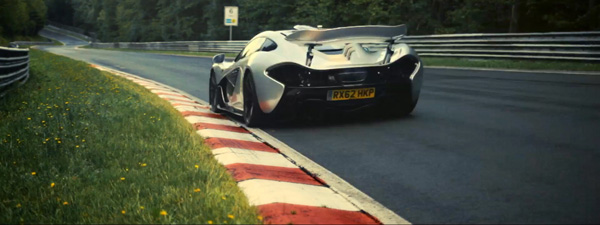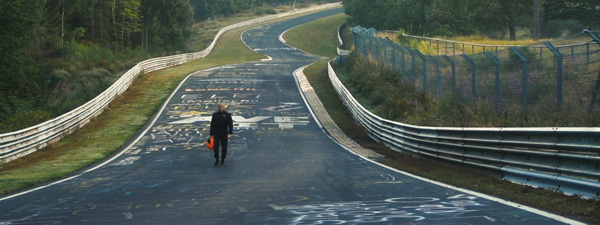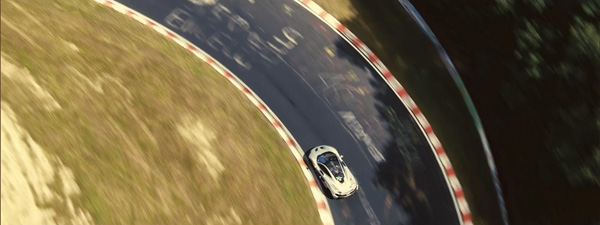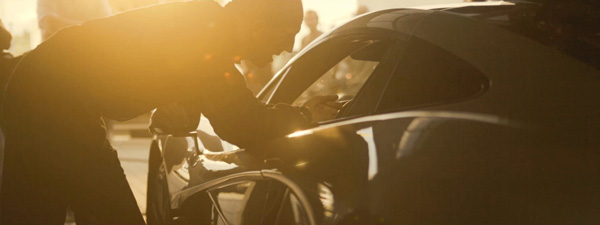
To promote the super fast Maclaren P1 road-car, 76ltd's Dan Gifford directed a complex shoot and post at the famous Nürburgring race track.
Racer’s Dream |
| The new Maclaren P1 costs a million Euros, drives at 350kph and looks like a racer’s dream. Because McLaren were keen to show that they have produced the world's best ever road-car, they chose to take on a challenge worthy of this claim for the car's launch. |
 |
With that goal in mind, their crew of engineers and technicians shifted operations to Germany's Nürburgring race track where they would attempt a drive only ever achieved by a full-spec racing car. They would try to break the longstanding 7 minute barrier time on the Nürburgring's challenging and dangerous Nordschleife, its infamous 20.83km, 154 bend North Loop. |
 |
Race Against Time76ltd's director Dan Gifford’s film crew and agency VCCP London travelled with them to make a film about the attempt. Like the racing team’s work, the shoot was a challenging one. McLaren had hired the track for a 2 hour time slot only, and Dan’s crew had to work alongside them. Not a moment could be wasted and planning was critical. Including time for refuelling and replacing tyres, the two hours with the car allowed only five runs to get the shots they needed. |
 |
The idea for the film, titled‘McLaren P1 vs the Nürburgring-Nordschleife’, was to portray the car as a character and tell the story of the P1 vs the track while revealing both a glimpse of the Nürburgring's intense racing history and the natural beauty of the surroundings. The approach to the track over the forest and several shots as the car speeds along it, would be captured from a helicopter using an ALEXA camera in a Cineflex gyroscope stabilisation rig. Because the car was travelling at between 180 and 350kph, they needed a high-speed helicopter to keep up. |
 |
Apart from the aerial photography, Dan and the crew positioned 13 Canon EOS 7D DSLR cameras along the track. Using Google Earth, they could mark out all of their camera positions in advance like a military operation. “We didn't make up storyboards, but we knew what we wanted,” said Dan. “It's a huge track, and some parts are more photogenic than others - we wanted to get maximum coverage as well as the prettiest shots we could. We also picked positions where we knew the car would be negotiating a spectacular corner or else going at very high speed.” |
 |
In the Driver’s SeatThe speed of the shoot and the number and variety of cameras also made dedicated monitoring impractical. The shoot includes shots that bring the viewer very close to the car and driver, involving tiny POV cameras on the P1 itself. A central Canon 5D was mounted behind the driver, plus a GoPro on the front bumper, one on the roof looking back and one on the side. But they chose these shots with care in the edit. The side camera shots, for example, were rejected as being too similar to shots seen in car magazines. |
 |
| Footage captured off the track that did contribute well to the film were the glowing backlit shots in the workshop with the McLaren crew. For this, they shot on the ALEXA using a simple but effective lighting set-up of three HMI lamps, blasting through a large diffuser in the workshop doorway,” Dan explained. “Elsewhere in the project, because they were very fortunate with the weather, all shots relied on available light. We were using standard Canon primes for the 5Ds and 7Ds, and Cooke Primes for the ALEXA.” |
 |
Speaking for ItselfDan followed through on the project into post. “The edit, done on the Avid, was difficult because of time pressures and the sheer amount of material. Also, we lost some key footage to a defective card, but were able to restructure the film to get around its absence. Aside from the basics of selecting the best footage and constructing the story accurately, our main task was to find the right tone for the film. For example, we had recorded interviews both in Germany and at the McLaren headquarters in Woking, England, but in the end we decided to let the car speak for itself and go for something quite poetic, with bursts of violence from the P1 on the ground. |
 |
| “The post production included a full day in a grading suite with colouristPaul Harrision at Finishin London,” Dan said. “To me, the grade is as important as the edit, so I was very much a part of that process, watching the project get more beautiful and helping with that. But no visual effects were required at all in post. Some people think we sped up the car footage, but I promise we didn't - it's just an extraordinarily fast car!” www.76ltd.com |


















